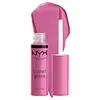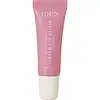What's inside
What's inside
 Key Ingredients
Key Ingredients

 Benefits
Benefits

 Concerns
Concerns

 Ingredients Side-by-side
Ingredients Side-by-side

Diisostearoyl Polyglyceryl-3 Dimer Dilinoleate
EmollientRicinus Communis Seed Oil
MaskingOctyldodecanol
EmollientZinc Oxide
Cosmetic ColorantPrunus Amygdalus Dulcis Oil
Skin ConditioningSilica
AbrasiveHydrogenated Vegetable Oil
EmollientSimmondsia Chinensis Seed Oil
EmollientMica
Cosmetic ColorantParfum
MaskingTocopherol
AntioxidantButyrospermum Parkii Butter
Skin ConditioningArgania Spinosa Kernel Oil
EmollientHelianthus Annuus Seed Oil
EmollientKaolin
AbrasiveCI 77491
Cosmetic ColorantCI 77499
Cosmetic ColorantCI 77742
Cosmetic ColorantDiisostearoyl Polyglyceryl-3 Dimer Dilinoleate, Ricinus Communis Seed Oil, Octyldodecanol, Zinc Oxide, Prunus Amygdalus Dulcis Oil, Silica, Hydrogenated Vegetable Oil, Simmondsia Chinensis Seed Oil, Mica, Parfum, Tocopherol, Butyrospermum Parkii Butter, Argania Spinosa Kernel Oil, Helianthus Annuus Seed Oil, Kaolin, CI 77491, CI 77499, CI 77742
 Reviews
Reviews

Ingredients Explained
These ingredients are found in both products.
Ingredients higher up in an ingredient list are typically present in a larger amount.
Mica is a naturally occurring mineral used to add shimmer and color in cosmetics. It can also help improve the texture of a product or give it an opaque, white/silver color.
Serecite is the name for very fine but ragged grains of mica.
This ingredient is often coated with metal oxides like titanium dioxide. Trace amounts of heavy metals may be found in mica, but these metals are not harmful in our personal products.
Mica has been used since prehistoric times throughout the world. Ancient Egyptian, Indian, Greek, Roman, Aztec, and Chinese civilizations have used mica.
Learn more about Mica